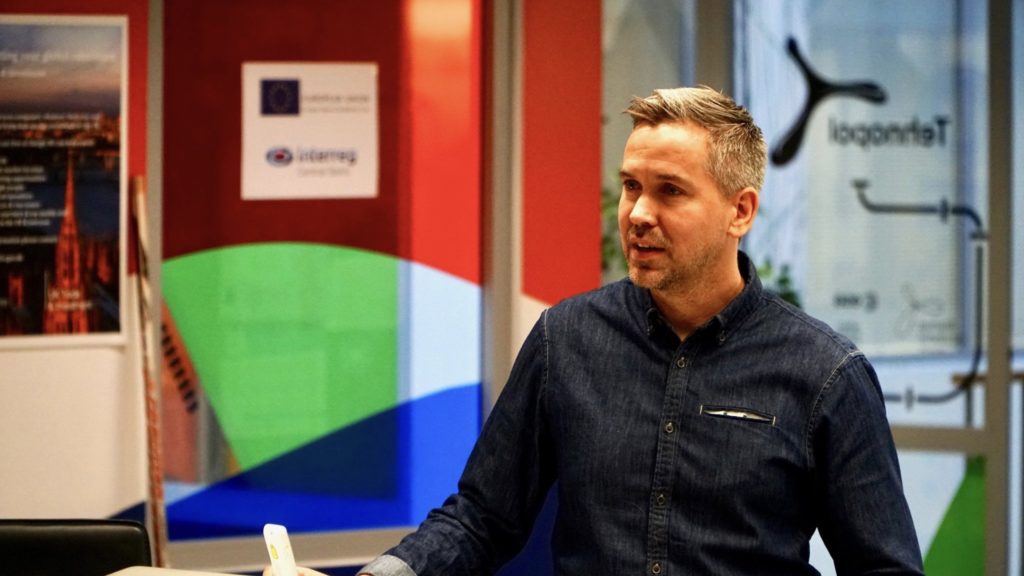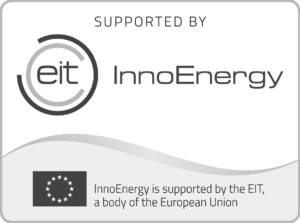29.01.2020
Zero waste restoran in Estonia – reality or a dream?

How much food do you throw away on a daily basis? Can you imagine how much food is left unused in the restaurants? Peeter Pihel, co-founder of Fotografiska Tallinn and passionate about zero waste cooking is committed to keep the food waste in his restaurant as low as possible.
Peeter performed at the first Scince Park Tehnopol’s Coffee Morning of 2020, where two perspectives were shared on how to become more sustainable and use the existing food resources or leftovers as much as possible. Since the beginning of June when Fotografiska Tallinn was opened the purpose of the concept has been to create as little food waste as possible and here are few examples of how they do it.
“I don’t have a specific tool to share. It’s more about changing the people’s mindset,” Peeter begins his presentation, adding that they are already thinking about sustainability in the first phase of the process – when ordering raw materials from the farmers.
Raw material comes directly from the farmer
“We order the raw materials directly from the farmers. For example, carrots and potatoes come in the boxes that we can return to them later. This avoids the problem of packaging,” says Peeter, adding that packaging is one of the biggest problems in the restaurants. Because of that, they also avoid foil and vacuum bags.
“From leaf to root, from nose to tail” principle
“Our house is quite big – 400-500 people in the house and we have 3 different concepts – cafe, bar and restaurant. Between them we divide the different parts of the raw material,” says Peeter, emphasizing how effectively they can utilize the different parts, leaving absolutely as less waste as possible.
While introducing people the new “from leaf to root – nose to tail” principle, people thought that they offer food which “best before” was passed, but that is not really the case. “People thought we were offering tainted food. We had to make some improvements in our communication to make the message clearer and the new approach understandable,” explains Peeter, that this new concept was initially unfamiliar to people.
However, if there are some food remains, Fotografiska finds the way how to use it. For example, food can be brought home by staff or they offer it to the food banks or shelters. However, when giving the food away to other organisations, you have to know the food safety requirements. “When giving away food more widely, food safety rules must be followed. Unfortunately, some catering companies find this process too complicated and tend to give up on food distribution,” says Peeter based on his experience.
Composting in a restaurant
Working in a restaurant 7 days a week will still produce a certain amount of residue. In this case they have boxes for biodegradable waste, where after 24 hours a good compost is ready to be given to the farmers.
“Soon, we are planning to hire a zero waste expert to help us make significant changes in sustainability. We are excited about which new and fresh ideas there are and where we can improve ourselves,” Peeter introduces his plans for the future. Peeter adds that there is only one ecosystem in the world that produces no residues and that is nature. Why not dream about this to work in the catering world as well?
Coffee Morning is the series of events at Science Park Tehnopol, where experts in the field share their experience on some interesting topic. At last friday’s Coffee Morning we talked about how to solve the problem of food waste and we had 3 awesome speakers: Peeter Pihel, co-founder of Fotografiska Tallinn and passionate about sustainable cooking, Joonatan Oras, founder of Wastefox, which collects biowaste to make compost, and Keily Volkov, Paulig’s Marketing Manager. See photos of the event HERE.












